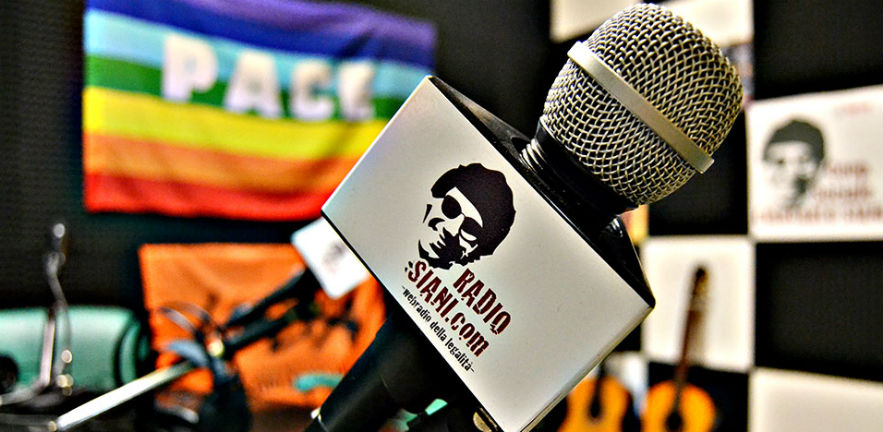Students of social innovation[1] know only too well the power of symbols and stories. Those who look for innovative solutions to complex, wicked social problems face, first, the challenge of conceptualising and clearly explaining to others the very social evil they are trying to address.


This is usually no trivial matter: the way we consider approaching, say, climate change will very much depend on how, and through which lenses, we understand this phenomenon.
Second, social innovators who are lucky enough to have identified somewhat viable solutions often struggle to illustrate this to donors, investors or policy-makers, and more generally to anyone who is not as familiar with the subject as they are, or as passionate.
There is, however, a third way in which symbols and narratives are key to social innovation work. In fact, tackling some of the most entrenched social problems generally requires not only long-term, sustainable actions, but also a change in people’s habits and way of mind. This is where the gradual construction of new meanings, or the re-shaping of long-standing symbolic practices, often come into play.
Social innovation and anti-mafia
Southern Italy, and especially my native Naples and Campania region, offer plenty of intriguing examples. Born in a land rich in traditions, rituals and unspoken rules, no Neapolitan would ever deny how deeply symbols matter. It is no wonder that local social innovators pay to this close and conscious attention.
Take the case of Radio Siani, an anti-mafia social co-operative based in the small town of Ercolano (Naples), long-dominated by mafia interests and once a central hub for extortion and drug trafficking. Radio Siani’s headquarter is in the flat once belonging to a mafia boss, who used to watch the murders he had commissioned from the balcony where young activists now enjoy their cigarettes. The flat currently hosts an anti-mafia web-radio, the idea of which was born after it was demonstrated that criminals in and out of prison exchanged messages through their own local radio. The organisation also runs educational activities for the local youth, and awareness-raising workshops for students who come to visit from all over the region. All visitors are asked to leave a message on the wall of what once was the boss’s kitchen.
Symbolic references abound. The radio and the social co-operative are both named after Giancarlo Siani, a Neapolitan journalist killed by the mafia in 1985 at age 26. The flat is packed with pictures and images of Giovanni Falcone and Paolo Borsellino, Sicilian judges also murdered by organised crime. The co-operative’s members have recently started to engage in agricultural work, producing a special breed of tomatoes in a field which was, too, once confiscated from a criminal family. The tomatoes, small and pointy, have been nick-named pizzini, a slang word for sharp-edged objects but also for the messages whereby the Sicilian mafia used to communicate.
Other actors in the Ercolano’s anti-mafia network are equally conscious in their symbolic strategies. The Associazione Antiracket, the charity which unites shop-owners and entrepreneurs who rebelled against the mafia’s extortions and reported offences to the police, organises a yearly ‘anti-extortion’ walk, where civil society is invited to take the streets and reclaim the right to own their town. Enlightened school principals adopted an open-door policy, arguing that schools should be open well beyond class-time to offer kids a stimulating alternative to life on the street. The carabinieri (Italian military force with police duties), very much involved in anti-mafia work and central to the eradication of the extortion practice in Ercolano[2], are about to move to a new, central and attractive headquarters.
The power of reclaiming spaces
In the centre of Naples, a collective of left-wing activists has also plenty to say about the practice of reclaiming spaces and symbols. In 2015, they occupied a former OPG (Italian forensic psychiatric hospitals, abolished in 2013 after investigations had shown their terrible living conditions and unsuitability to provide treatments and rehabilitation). The penitentiary police, legally in charge of the place, repeatedly attempted to kick them out. The collective put together an extended network of volunteers, and started to provide much needed social services, including legal, psychological and medical counselling, sport and theatre classes for the neighbourhood kids, and Italian language workshops for migrants and refugees. A petition to allow them to retain the building raised over 10,000 signatures in a few days. A judge deferred any decision to the Neapolitan mayor, who eventually legitimately entrusted the former hospital to the activists.
The building is now unrecognisable, covered as it is by artwork and populated by the beneficiaries of its many new activities. However, the cells and the courtyards where the inmates used to walk have been left completely intact. Testimonies from former internees, as well as messages left on the cells’ walls, have been collected and showcased in an art exhibition. The building has been re-named Je’ so pazzo, Neapolitan for ‘I am crazy’ and the title of a well-loved hit from a local singer. When interviewed, the activists described the choice of occupying that specific space as highly symbolic, an “attempt to turn a symbol of oppression, situated in a working-class neighbourhood, into a symbol of freedom”.
Tomatoes and public walks, radio broadcasting and graffiti, then, all fulfil a similar purpose. They are the tools whereby activists and innovators reclaim bits and pieces of an oppressive system — that of organised crime, and that of organised repression of mental disabilities — re-forging them for new purposes. They are meant to empower people, especially survivors of abuse or criminal offences, and to re-design urban spaces in innovative ways with the long-term purpose of making social change possible. Stories worth telling? I’d say so — and poignant lessons to be learned too.
References
[1] “Organising ‘social innovation’“. CJBS Brainfood, 11 January 2017.
[2] “The town that stood up to the mafia“. El Mundo, 29 December 2011.


Richard Akerele
Great article, very interesting lens to view how to change symbols in a positive way for social change.